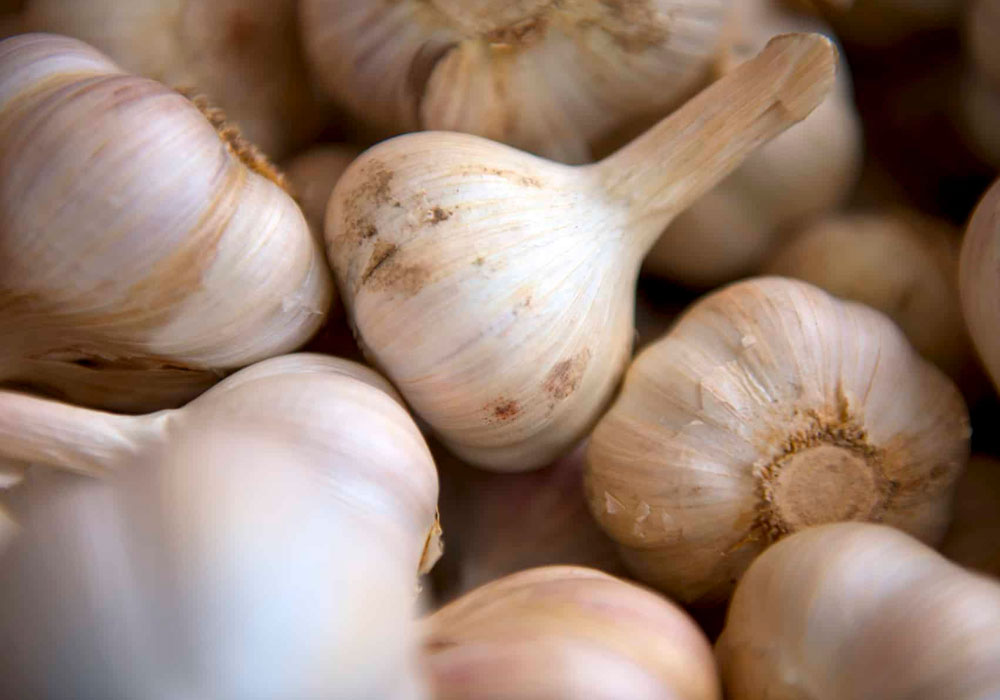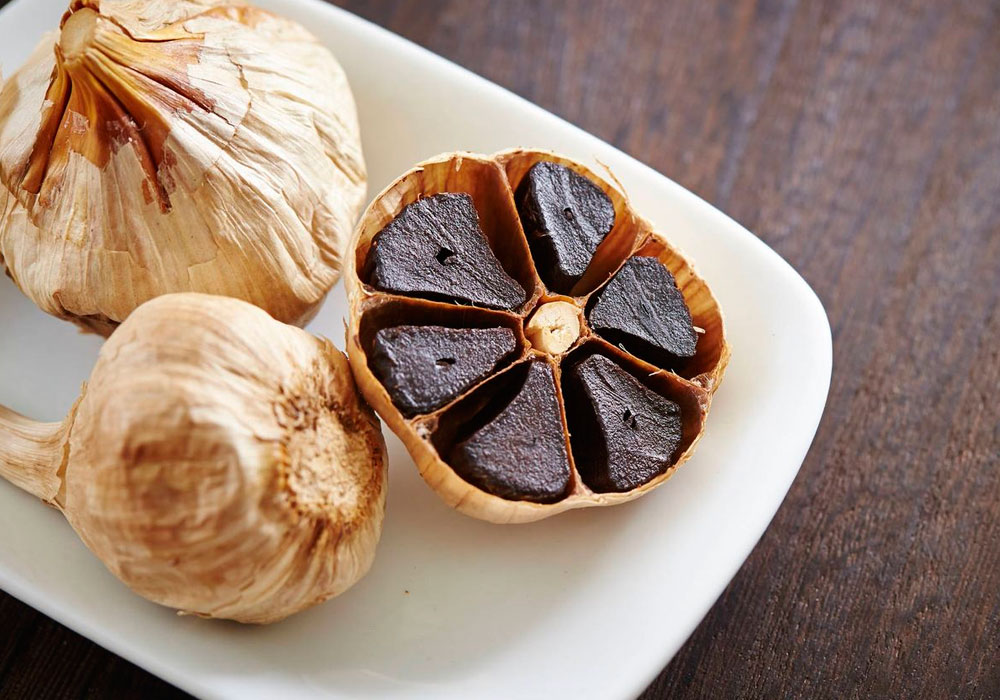
Do you know the difference between black garlic and white garlic?
Since black garlic has become popular, no doubt many people are wondering what the differences are between black garlic and white or common garlic. The

Inicio » How is black garlic made?
One of the latest gastronomic trends worldwide is black garlic, so the question usually arises as to how black garlic is made: is it a natural process? or is it a different variety of garlic?
Originally used as a spice in Asian cuisine, especially in Korea, it has spread to North America and Europe. It is produced by exposing common garlic bulbs to heat for weeks in humid conditions, a process that produces black garlic.
It contains no microbial action and is a completely natural process. The garlic obtained is slightly smaller in volume than the common garlic from which it originates. The taste is slightly sweet, a little sour and very umami, with slight notes of balsamic vinegar.
The organoleptic properties of black garlic are the result of the changes that occur due to the heating process, called ageing, that fresh, common or white garlic undergoes. During this process, humidity and temperature conditions are controlled for a certain period of time, where physico-chemical changes occur in the fresh garlic.
The most characteristic feature is the change in colour to black and the change in texture and flavour, with the complete disappearance of the strong smell and taste that characterises white garlic.
The result is a black garlic with a soft, tender and chewy texture. It also has a sweet taste, as the natural sugar content is greatly increased, which makes it more palatable to the consumer. It also has a higher concentration of compounds of known bioactivity.
Therefore, the improvement of the sensory, nutritional and digestibility properties of black garlic allows a higher intake of this food. Thanks to this type of garlic, the heaviness or reflux that white garlic causes in some people disappears, so black garlic can be eaten more frequently.
In addition, the increased health properties of black garlic make it the ideal food to include in the daily diet.
Contrary to what many might initially think, black garlic is not an ordinary type of garlic, but how black garlic is made is when ordinary garlic itself undergoes a process called the Maillard reaction. For garlic to turn black, an enzymatic process takes place at about 70 degrees for 30-40 days under certain humidity conditions.
The process then requires an aeration phase for another 30 days. During this process, the garlic not only changes colour but also loses the characteristic pungent taste of white garlic. This means that the black garlic is not repeated when consumed and results in a delicate, sweet but slightly acidic flavour.
Other blog articles

Do you know the difference between black garlic and white garlic?
Since black garlic has become popular, no doubt many people are wondering what the differences are between black garlic and white or common garlic. The

Traditional Irish recipe for potatoes au gratin with black garlic
Few things are more typical in Ireland than a good potato gratin, usually served with a roast, such as a roast chicken with herbs provençal,
If you are interested in black garlic
visit our shop

Contact





ALLIUMSOMA S.L. has been a beneficiary of the European Regional Development Fund whose objective is to improve the competitiveness of SMEs and thanks to which it has launched an International Digital Marketing Plan with the aim of improving its online positioning in foreign markets during the year 2022, with the support of the XPANDE DIGITAL Programme of the Cordoba Chamber of Commerce.
European Regional Development Fund A Way for Europe

This website uses cookies so that we can provide you with the best user experience possible. Cookie information is stored in your browser and performs functions such as recognising you when you return to our website and helping our team to understand which sections of the website you find most interesting and useful.
Strictly Necessary Cookie should be enabled at all times so that we can save your preferences for cookie settings.
If you disable this cookie, we will not be able to save your preferences. This means that every time you visit this website you will need to enable or disable cookies again.
This website uses Google Analytics to collect anonymous information such as the number of visitors to the site, and the most popular pages.
Keeping this cookie enabled helps us to improve our website.
Please enable Strictly Necessary Cookies first so that we can save your preferences!
More information about our Cookie Policy